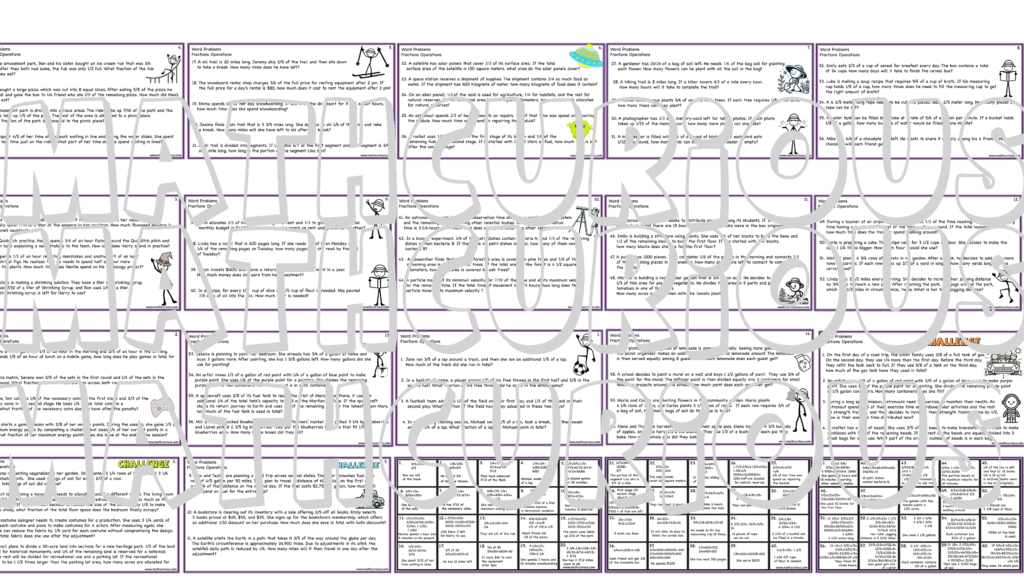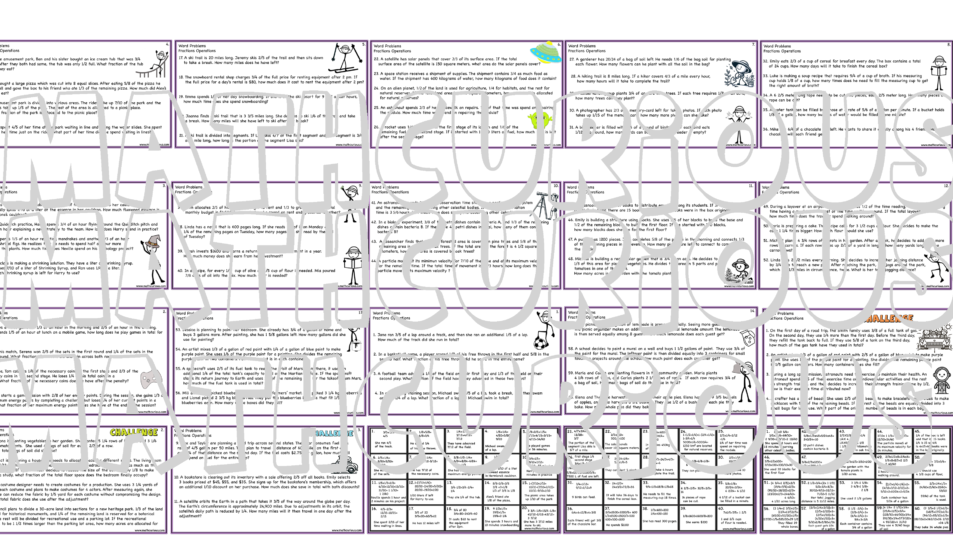Fractions are an important part of the curriculum of each grade and we spend a lot of time teaching the concept of fractions, their operations, and more. They are used in various aspects of everyday life, from cooking recipes to financial transactions. Word problems with fractions create scenarios of real life and show the students how fractions and their operations are necessary to know and understand. We know the benefits of using word problems in our instructions, however, I have the feeling that when it comes to fractions we focus more on computation and less on problem-solving activities. The reason is that for many students the concept of fractions is a challenging one and it takes time and practice to make sure they fully comprehend it. Apart from knowing how to solve fraction operations, the students need to know which operation/operations to use based on the information of the word problem. Below are some more benefits of using word problems when teaching fraction operations.
Real-world Application
Fractions word problems help students understand the practical application of fractions in real-life scenarios. Whether it’s splitting a bill, measuring ingredients for a recipe, or determining the distance traveled, fractions are everywhere. By solving word problems, students can relate mathematical concepts to everyday life, making learning more relevant and engaging.
Critical Thinking and Problem-Solving Skills
Word problems require students to read, comprehend, and analyze the problem before applying mathematical concepts to find a solution. This process enhances critical thinking and problem-solving skills, which are valuable not only in math but across all subjects and in daily life. Students learn to break down complex problems into manageable parts, identify relevant information, and apply appropriate methods to solve problems.
Improved Communication Skills
Solving word problems often requires students to explain their thought process, and reasoning, either in writing or verbally. This practice improves mathematical communication skills, helping students to clearly and effectively articulate their ideas and solutions. Being able to communicate about math is essential for academic success and is a valuable skill in the workforce.
Building Confidence
Word problems can be challenging, but overcoming these challenges can significantly boost a student’s confidence in their math abilities. As students become more proficient in solving fractions’s word problems, they develop a growth mindset, understanding that effort and persistence can improve their skills. This confidence can positively affect their attitude towards math and learning in general.
Word problems that make fraction operations interesting often involve scenarios that students can relate to or find engaging. Here are a few types of word problems that can make learning about fractions more fun and relevant:
Cooking and Recipes
Problems that involve adjusting recipes are great for practicing fractions. For example, if a cookie recipe is for 4 dozen cookies but you only want to make 1 dozen, how do you adjust the ingredients? These problems can be relatable for students who enjoy cooking or baking, making fractions more interesting by applying them to real-life situations.
Sports and Games
Using fractions to describe scores, statistics, or probabilities in sports can make math more engaging for students interested in athletics. For instance, a word problem might ask what fraction of a basketball team’s points were scored by a certain player, or what the probability is of rolling a fraction on a specially designed dice in a game.
Shopping and Money
Problems involving discounts, sales tax, and budgeting can make fractions come alive. Asking students to calculate the final price of an item after a 1/5 off discount or to figure out how to split a budget for a project into various fractions for different expenses connects math with practical money management skills.
Nature and Science
Word problems that involve fractions in the context of natural phenomena or scientific experiments can be fascinating. For example, consider a problem that asks students to calculate what fraction of a day certain animals sleep based on given data or to measure ingredients for a science experiment.
Art and Music
Integrating fractions with art and music can also make for compelling problems. Students could be asked to find what fraction of a painting’s area is covered by a certain color or to determine the fraction of notes that are quarter notes in a piece of music. These problems can help students see the beauty and application of fractions in creative fields.
Travel and Adventure
Word problems that involve calculating distances, fuel usage, or time spent on different parts of a journey can capture the imagination. For example, if you travel 3/4 of your journey by train and the rest by bus, what fraction of your time was spent on the bus if the whole trip took 8 hours?
Construction and Design
Asking students to calculate the materials needed for building a model or designing a garden, using fractions to measure distances or quantities, can make math feel like a creative and constructive endeavor. For example, designing a flower bed where 1/2 of the area is roses, 1/4 is tulips, and the rest is daisies.
I have created a collection of Fraction Operations-word problems with their solutions. The collection includes 69 word-problems starting with addition problems (like and unlike) then subtraction followed by multiplication and division problems. After that, there are mixed operations word problems and some challenging problems. The solutions are included.
Find the google slides collection here
Find the print cards collection here
Find the worksheet collection here


